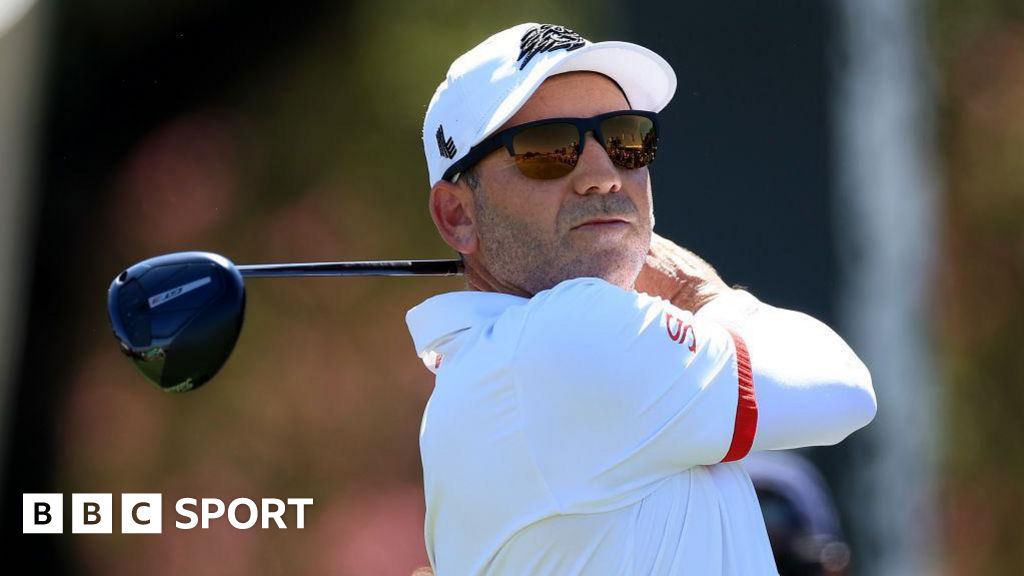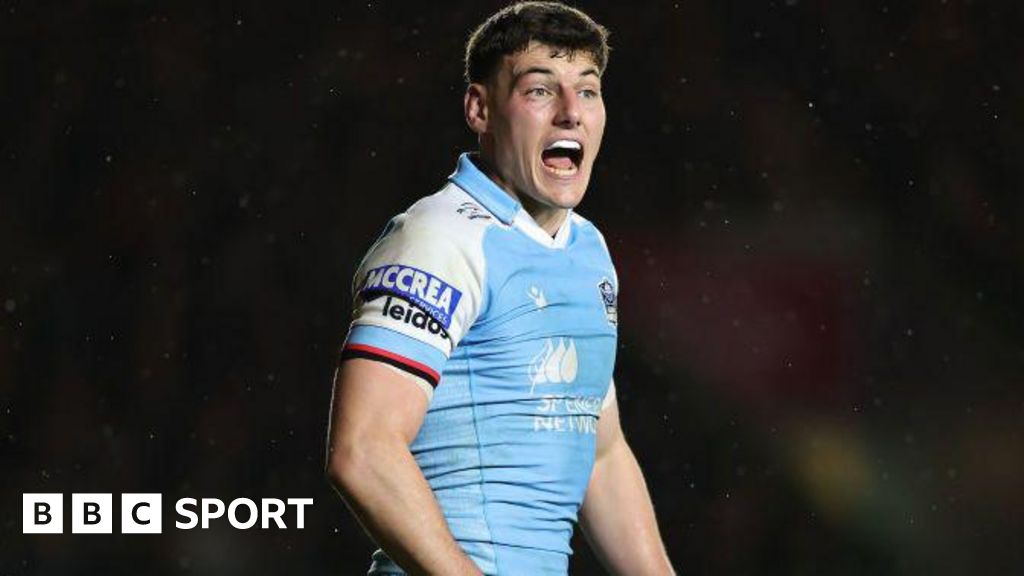ARTICLE AD BOX
| Venue: Augusta National Golf Club, Georgia Date: 7-10 April |
| Coverage: Listen to commentary on BBC Radio 5 Live; follow live text on the BBC Sport website and app; watch highlights on BBC Two and online. |
The roar of the patrons, jigs of joy and the sight of the world's best golfers with arms raised aloft have celebrated many magical Masters moments at Augusta National.
Take your pick from Tiger Woods' superb chip-in on the 16th hole, Phil Mickelson's remarkable six-iron over the tributary to Rae's Creek at the 13th, Sandy Lyle's shot from the fairway bunker on 18, Jack Nicklaus' birdie putt on the 17th and Bubba Watson's stunning 90-degree hook shot on the 10th, all were key to winning the Green Jacket.
But there are an avalanche of others, BBC Sport asked four Masters champions, whose only major triumphs have come at Augusta National, to take us through the defining shot of their victories.
- Iain Carter column: Woods at Augusta is 'stuff of sporting legend'
- DeChambeau taking 'risk' to play at Masters
'It's the greatest shot I've ever hit'
As darkness and drizzle descended on Augusta in 2013, Australia's Adam Scott was tied with Argentina's two-time major winner and 2009 champion Angel Cabrera to set up a sudden-death play-off.
Scott, using an anchored putting stroke which is now outlawed, dropped in a 15-foot birdie on the 10th green on the second extra hole to become the first Australian player to win the Masters.
But the 41-year-old's triumph was teed up by a sumptuous six-iron shot he regards as arguably his "greatest shot ever".
"Luckily for me in that tournament there were a few great shots to choose from," he said. "Maybe the least exciting was the six-iron shot, but the degree of difficulty in that moment makes it a great shot.
"If it was the first round, you wouldn't even go for that shot, the risk/reward doesn't stack up.
"In that moment, it was getting dark, I knew I needed a three, so I played the shot to get me as close as possible.
"Steve Williams [his caddie] and I had talked about the moment where I just needed to step up and hit a shot. There was no other option. I had to cut a six iron off a hook lie, it was risky, but it paid off.
"It was quite a scene. The clouds were low, it was drizzling, cooling off. It felt more like a football game, than the Masters.
"Generally the etiquette is of a high quality. It was just more rowdy that normal, for me it was a different experience. Angel gave me a thumbs up and I did the same. I thought we played good quality shots in the play-off. It was really good golf under the pressure."
'I was just frozen watching it'
The 1987 Masters looked to be a battle of two of golf's heavyweights with Seve Ballesteros and Greg Norman tied at three under par after 72 holes.
However, the unheralded Larry Mize holed a birdie putt on the 18th to make it a three-way play-off party.
And after Ballesteros bogeyed the first sudden-death play-off hole, the par-four 10th, Mize delivered a career-defining shot on the 11th to beat Norman and claim his only major triumph.
While the Australian was lining up a long-range birdie putt, Mize was faced with a perilous 140-foot chip from the right across a lightning fast green with the water awaiting any slight misjudgement.
"I couldn't play a flop shot or I'd be in the water," said Mize. "I only had one shot I felt like I could play.
"I knew I had to play a pitch and run with the sand wedge, and I used to practice that type of shot a lot. I had to be aggressive and put the pressure back on Greg.
"When you are pitching or chipping, you pick a spot where you want to land the ball. I played it back in my stance, hands ahead. I hit that spot, it looked really good.
"When you hit a shot you don't like you have a little reaction to it, but with this one, I held my finish and was just frozen watching it, as it came off perfect, couldn't have been better.
His deft chip bounced twice on the fringe before rolling down into the heart of the cup to spark pandemonium with Mize's visor flying into the air and the Augusta native jogging round in celebration before a clearly stunned Norman missed his birdie attempt.
'What are the golfing gods trying to do?'
Trevor Immelman's 2008 success was notable because he became the second South African to win the Masters and the first since his hero Gary Player claimed the last of his three Green Jackets in 1978.
He was also the first wire-to-wire winner since Ray Floyd in 1976, surviving a final-round wobble to finish three strokes ahead of Woods just four months after surgery to remove a tumour.
But having decided to ignore the leaderboard his "best tee shot of the week" found a fresh divot on the 18th to prompt a minor panic as the commentators speculated that the golfing gods had turned against him.
"It's such a narrow shot through the trees from the tee, it's claustrophobic. I smashed it. It came out so perfect," said Immelman.
"I let out a huge sigh of relief. And I got there an saw the ball in the divot. I wanted to beg for one more good shot. 'Please', I said, 'just one last time, make it the right distance', and it was a great shot."
Immelman said it was at that point he first realised the advantage he had over the field.
"I handed the eight-iron back to my caddie and I asked him and he said 'it's all over, you have a three-shot lead'," he added.
"I'm 40 yards from where I hit the shot, I said to him, you mean I can three putt and win? No, he replied, you can four putt and win. So that was that, I knew I had it, and for the first time I came out of this bubble I had been in all week."
'It was going in slow motion'
Ian Woosnam's victory in 1991 was the fourth consecutive year the Masters had been won by a British player (Sandy Lyle and Sir Nick Faldo, twice, won in the preceding years).
But it was a nerve-shredding finale. The Welshman was tied at 11 under with American great Tom Watson and Spain's Jose Maria Olazabal, as he approached the final hole.
And while Olazabal and Watson both dropped shots, Woosnam delivered a precious par despite smashing his tee shot way left off the tee into the crowd. An incredible 10 minutes elapsed between his tee shot and second.
"I knew I could carry the bunkers, but I hadn't gone and practiced that second shot," said Woosnam. "So that was a mistake, and the hardest thing from that position was getting the correct yardage to the green.
"My caddie said to me, 'we've got 147 yards, I think'. It was going in slow motion, took ages to move the crowd. All the chairs were set out, it was hard to move the patrons. I was getting a bit irritated moving people around, but I found that the more irritated I got, the better I performed.
"I hit an eight-iron, it came up a little shot, caught it a little fat, just a hair, two or three yards off it."
Woosnam elected to putt his third from the fringe of the green because he was "very nervous". His ball "jumped" and left an eight-footer for the title.
"We looked at the putt and you realise you have worked all your life for this, practicing to be like Jack Nicklaus, Gary Player, Arnold Palmer - this putt is for the Masters," the Welshman recalled. "Someone must have been looking down on me, as it was just on the outside right of the hole, I was confident of making it.
"And if I didn't, I was in a play-off. That was a back up, I still had a chance. I was finding ways of taking the pressure off me in that moment, that helped me relax."

 2 years ago
50
2 years ago
50








 English (US)
English (US)